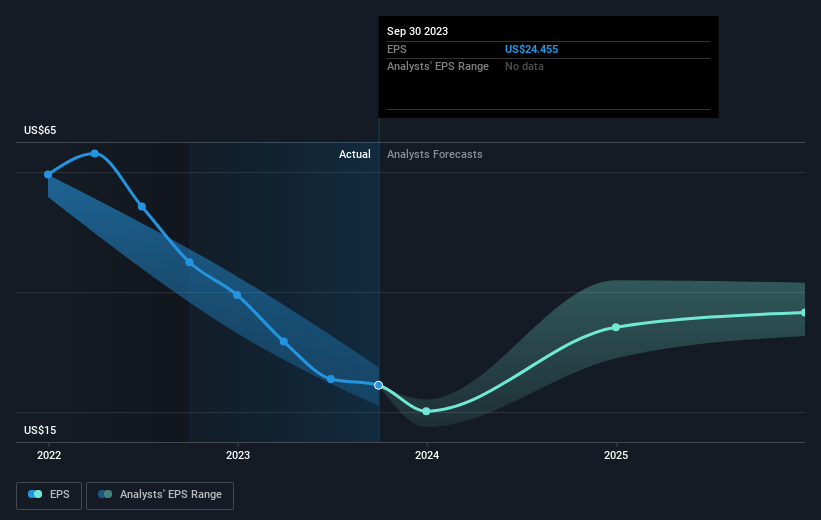Stock Analysis
- United States
- /
- Consumer Finance
- /
- NasdaqGS:CACC
Investing in Credit Acceptance (NASDAQ:CACC) three years ago would have delivered you a 67% gain

By buying an index fund, investors can approximate the average market return. But if you pick the right individual stocks, you could make more than that. For example, Credit Acceptance Corporation (NASDAQ:CACC) shareholders have seen the share price rise 67% over three years, well in excess of the market return (13%, not including dividends). On the other hand, the returns haven't been quite so good recently, with shareholders up just 20%.
So let's assess the underlying fundamentals over the last 3 years and see if they've moved in lock-step with shareholder returns.
Check out our latest analysis for Credit Acceptance
There is no denying that markets are sometimes efficient, but prices do not always reflect underlying business performance. One way to examine how market sentiment has changed over time is to look at the interaction between a company's share price and its earnings per share (EPS).
Credit Acceptance was able to grow its EPS at 3.5% per year over three years, sending the share price higher. In comparison, the 19% per year gain in the share price outpaces the EPS growth. This suggests that, as the business progressed over the last few years, it gained the confidence of market participants. It's not unusual to see the market 're-rate' a stock, after a few years of growth.
You can see below how EPS has changed over time (discover the exact values by clicking on the image).

It's probably worth noting that the CEO is paid less than the median at similar sized companies. It's always worth keeping an eye on CEO pay, but a more important question is whether the company will grow earnings throughout the years. Before buying or selling a stock, we always recommend a close examination of historic growth trends, available here..
A Different Perspective
Credit Acceptance provided a TSR of 20% over the year. That's fairly close to the broader market return. Most would be happy with a gain, and it helps that the year's return is actually better than the average return over five years, which was 6%. It is possible that management foresight will bring growth well into the future, even if the share price slows down. It's always interesting to track share price performance over the longer term. But to understand Credit Acceptance better, we need to consider many other factors. Consider risks, for instance. Every company has them, and we've spotted 2 warning signs for Credit Acceptance you should know about.
If you like to buy stocks alongside management, then you might just love this free list of companies. (Hint: insiders have been buying them).
Please note, the market returns quoted in this article reflect the market weighted average returns of stocks that currently trade on American exchanges.
Valuation is complex, but we're helping make it simple.
Find out whether Credit Acceptance is potentially over or undervalued by checking out our comprehensive analysis, which includes fair value estimates, risks and warnings, dividends, insider transactions and financial health.
View the Free AnalysisHave feedback on this article? Concerned about the content? Get in touch with us directly. Alternatively, email editorial-team (at) simplywallst.com.
This article by Simply Wall St is general in nature. We provide commentary based on historical data and analyst forecasts only using an unbiased methodology and our articles are not intended to be financial advice. It does not constitute a recommendation to buy or sell any stock, and does not take account of your objectives, or your financial situation. We aim to bring you long-term focused analysis driven by fundamental data. Note that our analysis may not factor in the latest price-sensitive company announcements or qualitative material. Simply Wall St has no position in any stocks mentioned.
About NasdaqGS:CACC
Credit Acceptance
Credit Acceptance Corporation engages in the provision of financing programs, and related products and services in the United States.
Exceptional growth potential and fair value.

